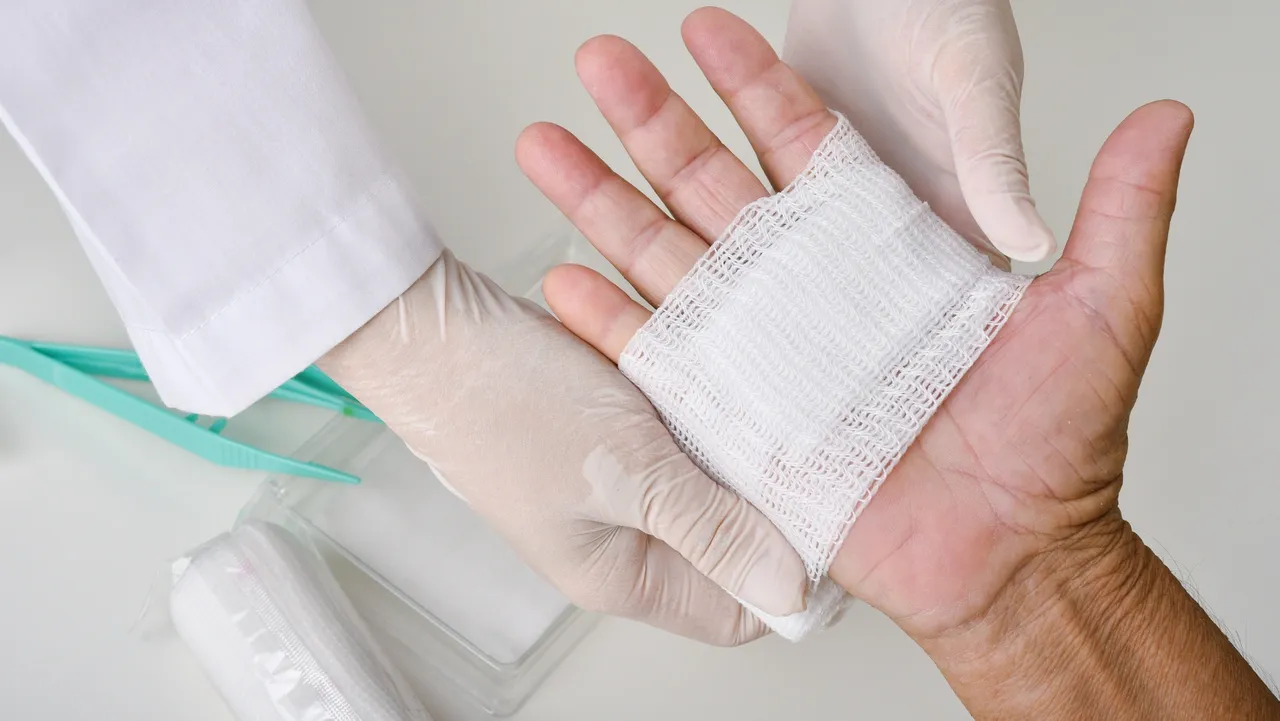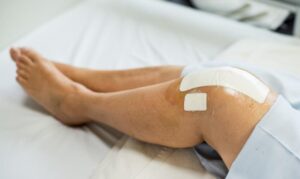Understanding Medical Wound Care
Medical wound care refers to the specialized treatment and management of wounds to ensure proper healing and prevent complications. While small cuts and scrapes may heal with basic first aid, deeper or chronic wounds often require professional medical intervention. Medical wound care goes beyond cleaning and bandaging—it involves assessing the wound’s type, depth, and risk of infection, then applying evidence-based methods for treatment. Proper wound care ensures that the skin, tissues, and underlying structures recover as effectively as possible. Without appropriate medical attention, wounds can worsen, leading to infections, tissue damage, or even systemic illness. This is why healthcare providers emphasize wound care as an essential part of overall patient health. By understanding what medical wound care involves, patients and caregivers can make more informed decisions about when to seek professional help.
Types of Wounds Requiring Medical Attention
Not all wounds heal the same way, which is why medical wound care must be tailored to the individual case. Acute wounds, such as surgical incisions or accidental injuries, typically heal within a predictable timeframe if treated correctly. Chronic wounds, however, such as diabetic ulcers or pressure sores, often take longer and may require ongoing medical management. Post-surgical wounds need consistent monitoring to avoid complications like infections or poor healing. Pressure ulcers, which often affect bedridden patients, require careful repositioning and specialized dressings. Traumatic wounds like burns, deep lacerations, and abrasions can cause long-term damage if not addressed properly. Knowing the signs that a wound requires professional evaluation—such as excessive redness, pus, foul odor, or delayed healing—can prevent severe complications. When in doubt, it is always safer to have wounds assessed by a healthcare provider trained in medical wound care.
The Healing Process Explained
Wound healing is a complex biological process that unfolds in stages, and medical wound care supports each of these phases. The first stage, hemostasis, occurs immediately after injury as blood clotting helps control bleeding. Next is the inflammation stage, where the body sends white blood cells to fight infection and remove debris. The proliferation stage follows, during which new tissue and blood vessels form to repair the damaged area. Finally, the remodeling or maturation stage strengthens the skin and restores normal function. Various factors can delay this natural process, including age, chronic health conditions, poor nutrition, and infections. Medical wound care ensures that any barriers to healing are addressed promptly, allowing the wound to move through these stages smoothly. Understanding how the body heals makes it easier for patients and caregivers to appreciate why specialized medical care is sometimes necessary.
Techniques and Methods in Medical Wound Care
Proper wound care involves several proven methods that reduce complications and promote faster healing. The first step is thorough cleaning and disinfection, which prevents bacteria from multiplying within the wound. Healthcare professionals then select the most appropriate dressing based on the wound’s size, type, and depth. For example, hydrocolloid dressings help retain moisture, while foam dressings provide cushioning and absorb excess fluid. Advanced wound care technologies are increasingly being used, including negative pressure wound therapy, which removes fluids and stimulates blood flow. Bioengineered skin substitutes and antimicrobial dressings are also emerging as effective tools in complex cases. Sterile practices are critical throughout the process to reduce the risk of infection. By applying these techniques, medical wound care provides tailored solutions that significantly improve healing outcomes.
Common medical wound care methods include:
- Thorough cleaning with antiseptic solutions
- Application of moisture-retaining dressings
- Use of negative pressure wound therapy devices
- Monitoring for early signs of infection
- Nutritional support to encourage tissue repair
These methods, when used correctly, help patients avoid complications and achieve faster recovery.
Role of Healthcare Professionals in Wound Care
Wound care is often too complex for patients or caregivers to handle alone, which is why medical professionals play such a critical role. Wound care specialists are trained to evaluate wound types, identify potential risks, and recommend the best treatment methods. Nurses and doctors monitor wound progress, ensuring dressings are changed at the right intervals and that healing stays on track. Wound care clinics often provide access to specialized equipment and treatments not available in standard settings. Professional guidance also ensures that infections are caught early, reducing the risk of hospitalizations or further complications. Patients benefit greatly when they actively collaborate with their healthcare providers, reporting any unusual symptoms and following wound care instructions carefully. This partnership approach leads to better, faster healing outcomes. By recognizing the expertise of medical professionals, patients gain the confidence to trust the process of medical wound care.
Home-Based Medical Wound Care Guidance
For many patients, part of wound recovery occurs at home, and safe practices are vital to avoid setbacks. Home-based wound care often involves carefully following a provider’s instructions on cleaning and dressing changes. Patients should wash their hands thoroughly before touching wounds, use only recommended supplies, and maintain a clean environment to avoid contamination. Nutrition also plays an important role—diets rich in protein, vitamins, and minerals help the body generate new tissue more efficiently. Caregivers and patients should also be aware of warning signs such as swelling, discharge, fever, or sudden increases in pain, all of which require immediate medical attention. Lifestyle choices such as quitting smoking and staying hydrated can further support wound healing. While home care can be effective, it should always be guided by professional advice to ensure safety and effectiveness. Medical wound care is not only about treatment—it’s about empowering patients with the knowledge to actively support their own recovery.
Preventing Complications in Wound Healing
Complications such as infections, delayed healing, and excessive scarring are common concerns in wound management. Medical wound care helps minimize these risks by addressing potential problems before they escalate. Patients should be taught how to recognize the early signs of infection, including redness, warmth, and unusual discharge. Proper use of dressings and sterile supplies reduces the likelihood of contamination. Maintaining follow-up appointments ensures healthcare providers can assess progress and make adjustments as needed. Preventive strategies such as keeping pressure off vulnerable areas, especially for bedridden patients, can stop chronic wounds from developing. Reducing scarring may involve using specialized dressings or topical treatments that encourage smoother skin regeneration. By following prevention-focused practices, patients and providers work together to create the best environment for healing.
Advanced Innovations in Medical Wound Care
The field of medical wound care is constantly evolving, with new technologies offering more effective solutions. Growth factor therapies are being developed to stimulate tissue repair at the cellular level. Stem cell therapy has shown promise in regenerating damaged tissues and accelerating healing. Smart dressings equipped with sensors can now monitor wound conditions and alert patients or providers to potential issues. Negative pressure wound therapy devices continue to advance, becoming more compact and accessible for home use. Bioengineered skin substitutes are providing new hope for patients with severe or non-healing wounds. These innovations highlight how science is making wound care more precise, efficient, and patient-friendly. As research progresses, the future of wound management looks promising, with greater emphasis on personalized care tailored to each individual’s needs.
Frequently Asked Questions (FAQ)
What is the difference between basic wound care and medical wound care?
Basic wound care is suitable for small cuts and scrapes, while medical wound care addresses deeper, chronic, or high-risk wounds requiring specialized treatment.
How often should dressings be changed?
The frequency depends on the wound type, but most dressings are changed every 24 to 48 hours under professional guidance.
Can chronic wounds ever fully heal?
Yes, with proper medical management, many chronic wounds can heal, although the timeframe may be longer than with acute wounds.
What should I eat to promote faster wound healing?
Foods rich in protein, vitamin C, zinc, and other nutrients are recommended for supporting tissue repair and immune function.
How do I know if a wound is infected?
Look for signs such as redness, swelling, foul odor, pus, fever, or increasing pain, and seek medical help immediately if these occur.
Takeaway
Medical wound care is an essential aspect of health that ensures wounds heal safely and efficiently while reducing the risk of complications. From understanding the types of wounds and healing stages to learning advanced treatment options and home care practices, patients can actively participate in their recovery journey. With guidance from healthcare professionals and the use of innovative methods, wounds that once seemed difficult to manage can now be treated effectively. Proper care is not just about closing a wound—it’s about restoring comfort, preventing long-term damage, and enhancing overall well-being.






